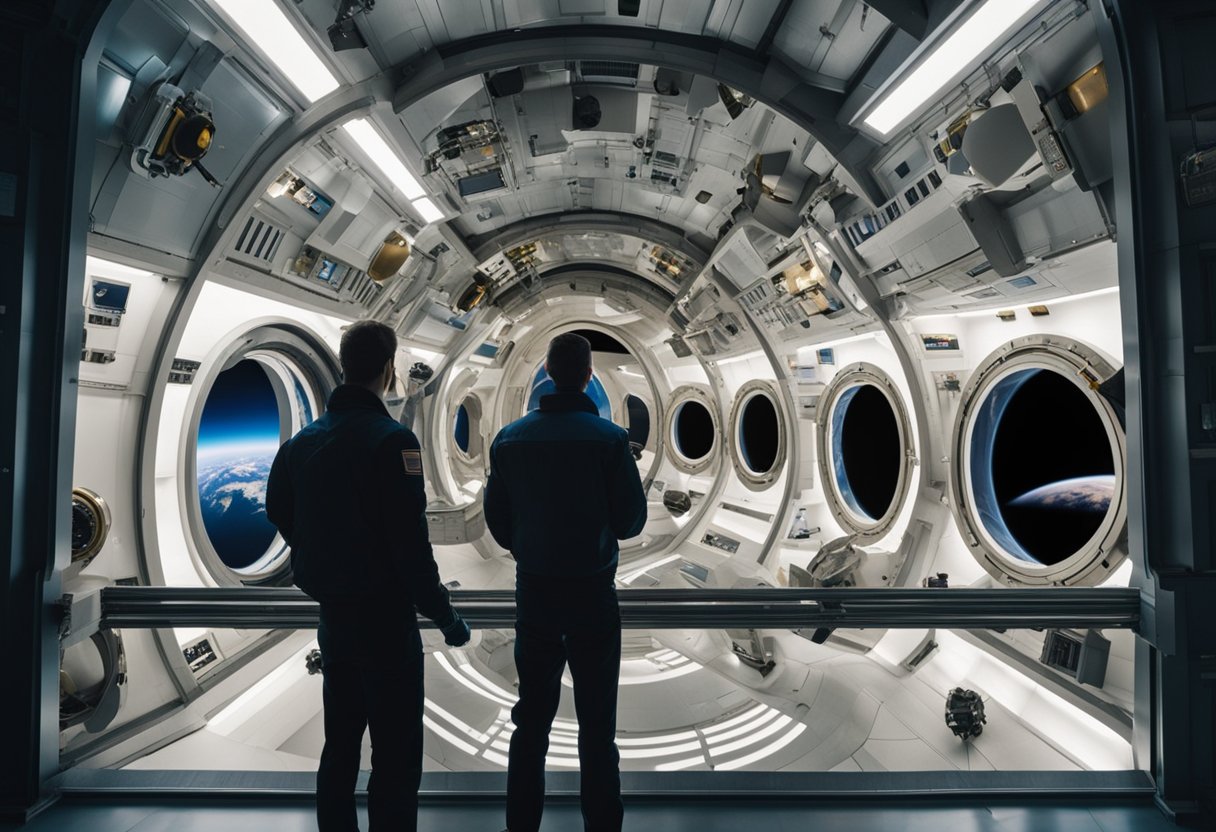
Space tourism has evolved dramatically from a futuristic dream to an increasingly accessible reality. As we venture into this exciting era, the ultimate experience for enthusiasts and adventurers is now becoming a possibility: the spacewalk. Previously reserved for trained astronauts, companies are now preparing to offer private individuals the chance to embark on extravehicular activities (EVA), a term that encompasses all activities completed by an astronaut outside of a spacecraft in space.
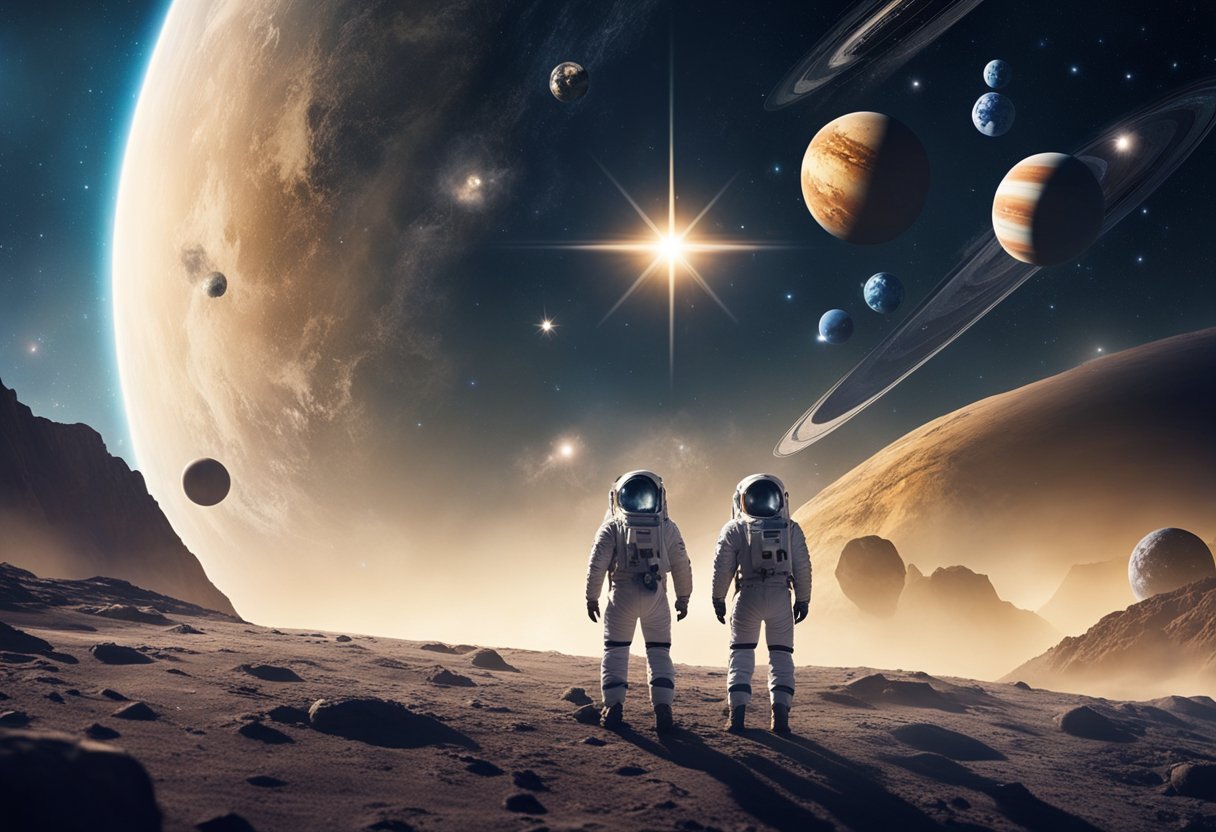
The spacewalk experience for tourists represents a significant leap from merely observing Earth from orbit. It promises an unmatched perspective and a profound sense of connection with the cosmos. However, with this extraordinary opportunity comes a set of challenges and requirements to ensure safety and maximise the experience. Tourists eager to explore the void of space must undergo comprehensive training, get familiar with the necessary spacecraft, and understand the associated costs and safety measures.
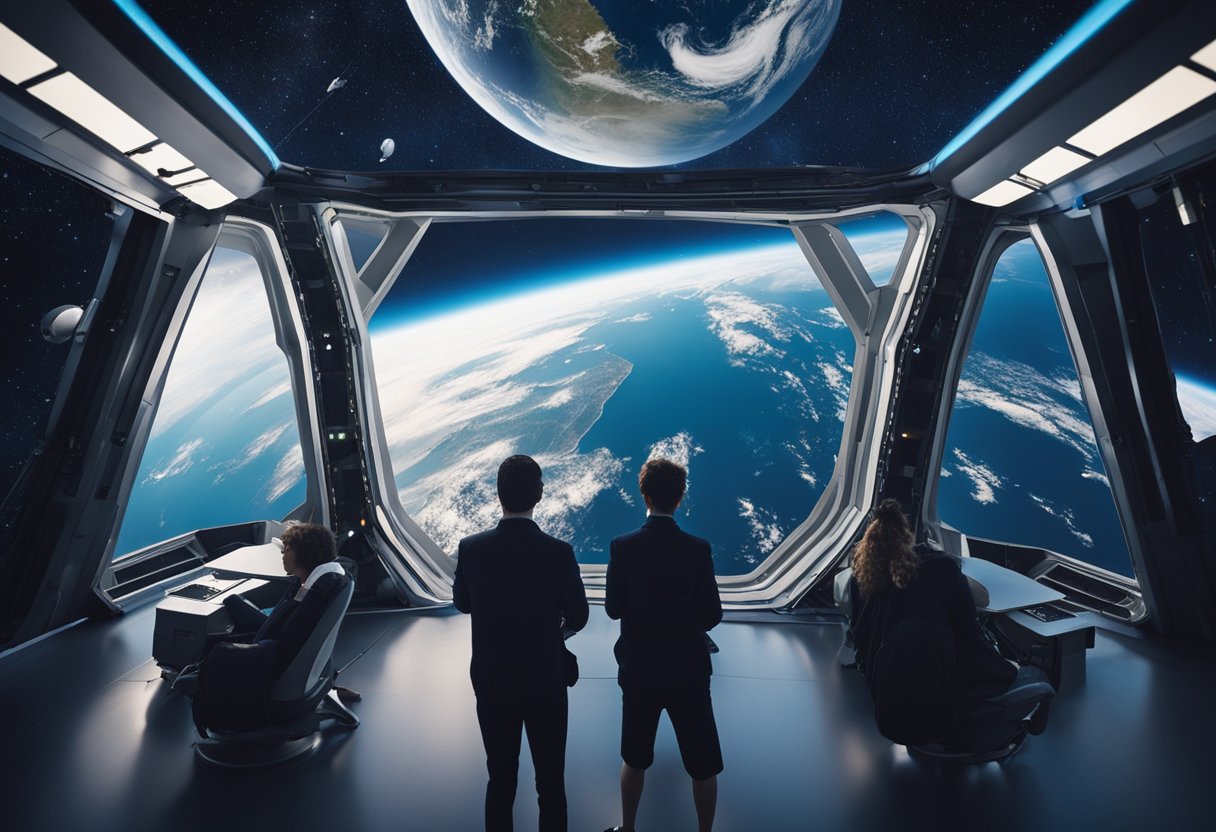
In the nascent stages of space tourism, we witnessed a significant milestone when American businessman Dennis Tito became the world’s first self-funded space tourist. In 2001, he spent nearly eight days in orbit aboard the Russian Soyuz spacecraft, facilitated by the company Space Adventures. Tito’s journey marked the beginning of the era where space was no longer an exclusive playground for astronauts and cosmonauts.
The collaboration between Russia and Space Adventures continued, allowing a handful of affluent explorers to experience space. They launched with Russian crews from the Baikonur Cosmodrome, a testimony to international cooperation in the realm of space exploration.
Eric Anderson, a key figure in the commercialisation of space travel, co-founded Space Adventures, which arranged trips for those who could afford the hefty price tag. The company partnered with Russian space agency Energia to facilitate these trips, ensuring tourists received the necessary training to endure the rigours of space.
A prominent example of moving forward is the planned voyages involving a Japanese billionaire, who has expressed intentions to visit the Moon.
| YearMilestone in Space Tourism | |
|---|---|
| 2001 | Dennis Tito’s historic flight |
| 2021 | Japanese billionaire announces lunar ambitions |
Though commercial spaceflight is still in its infancy, platforms like SpaceVoyageVentures.com document the evolution of space tourism, covering current and future opportunities. The involvement of private participants like the Russian cosmonauts and international entrepreneurs is pivotal to our understanding of this endeavour’s potential, solidifying the notion that space tourism, once a science fiction dream, is gradually becoming a reality.
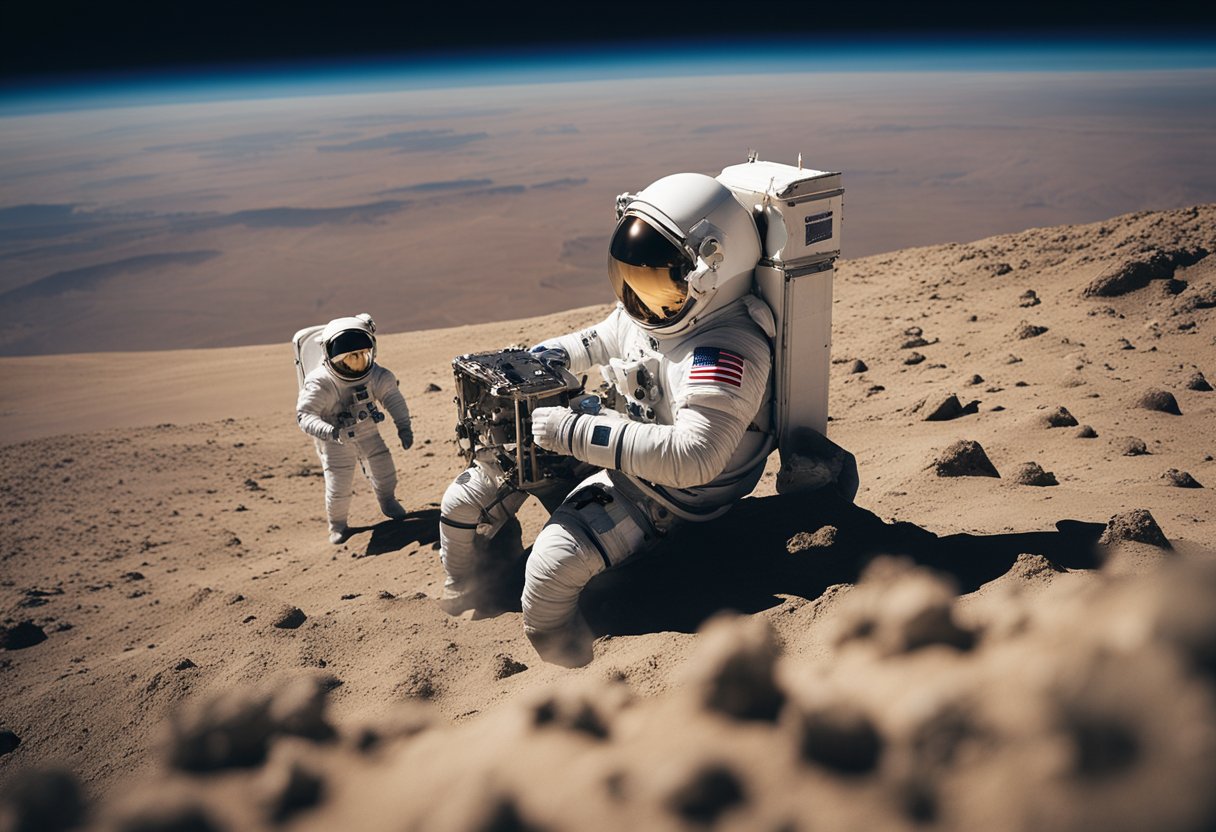
In the burgeoning era of commercial space travel, we’re witnessing a monumental shift where the cosmos are no longer exclusive to astronauts. This section details the financial and legal considerations you must be aware of.
For those aspiring to leave Earth’s atmosphere, entry isn’t cheap. Space Adventures has previously offered spacewalks for the ultra-wealthy, with each ticket costing $15 million for the chance to embark on a 90-minute spacewalk outside the International Space Station (ISS). Several companies are vying to be the leading providers of space tourism, with anticipated ticket prices being listed on early adopter websites like SpaceVoyageVentures.com. The costs for these experiences can range into the millions, making accessibility limited primarily to private citizens who possess substantial wealth.
Before embarking on a space voyage, legal contracts are a critical step ensuring that both the tourists and the companies are aware of their rights and responsibilities. The contracts cover a host of intricate details, including risks, liabilities, and obligations of the private citizens participating. It’s paramount to understand that these agreements are subject to international space law, which can be incredibly complex due to its relative novelty. Each individual will need to abide by extensive training requirements and meet a set of stringent health criteria to be cleared for the journey.
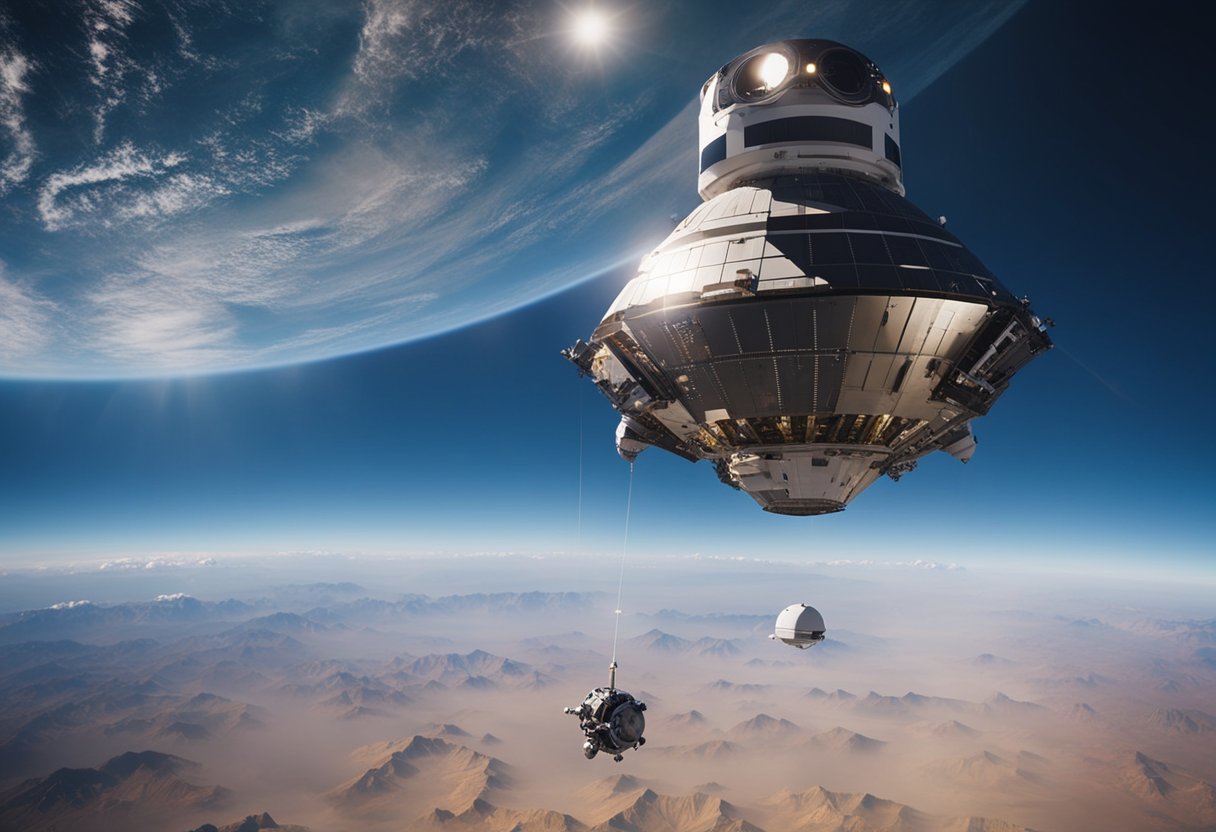
In the burgeoning industry of space tourism, certain spacecraft have been pivotal in facilitating extravehicular activities (EVAs) for tourists. Our focus is on the Russian Soyuz spacecraft and the Crew Dragon spacecraft, both of which have made historic strides in opening the realm of spacewalks to private astronauts.
The Russian Soyuz spacecraft has been a reliable vehicle for space travel to the International Space Station (ISS) for decades. With a design that has stood the test of time, the Soyuz has a separate orbital module where spacewalks can be conducted. Tourists looking for the unique experience of an EVA have trusted the Russian Soyuz capsule, known for its rigorous safety protocols and successful history of launches.
Crew Dragon spacecraft, developed by SpaceX, represents the cutting edge of private space exploration. Unlike the vintage design of the Soyuz, Crew Dragon boasts modernised interiors and autonomous docking capabilities with the ISS. It is a cornerstone of our current ventures into space tourism, offering advanced life support systems and the potential for tourists to embark on spacewalks.
Tisit SpaceVoyageVentures.com for further insights into these spacecraft and upcoming excursions to the stars.
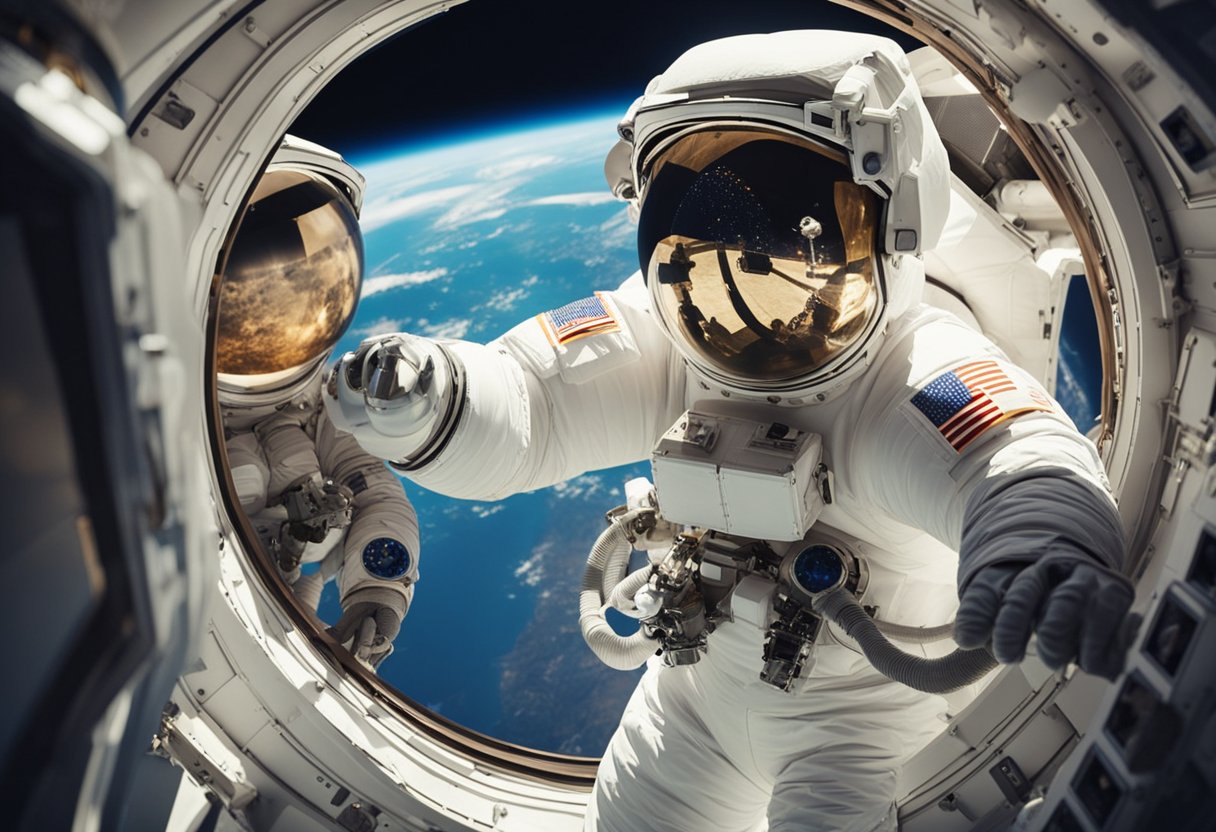
The ability to participate in a spacewalk represents a pinnacle achievement for space tourists, combining the thrill of extravehicular activity (EVA) with intense training.
Before embarking on EVAs, we ensure that our space travellers undergo comprehensive specialised training. This preparation includes:
During the extravehicular activity, tourists will:
We’ve designed our EVA program to enable a seamless transition from training to the actual spacewalk, ensuring that our space tourists receive an experience nothing short of extraordinary. For those intrigued by the possibility of space tourism and EVA, additional details can be found on SpaceVoyageVentures.com.
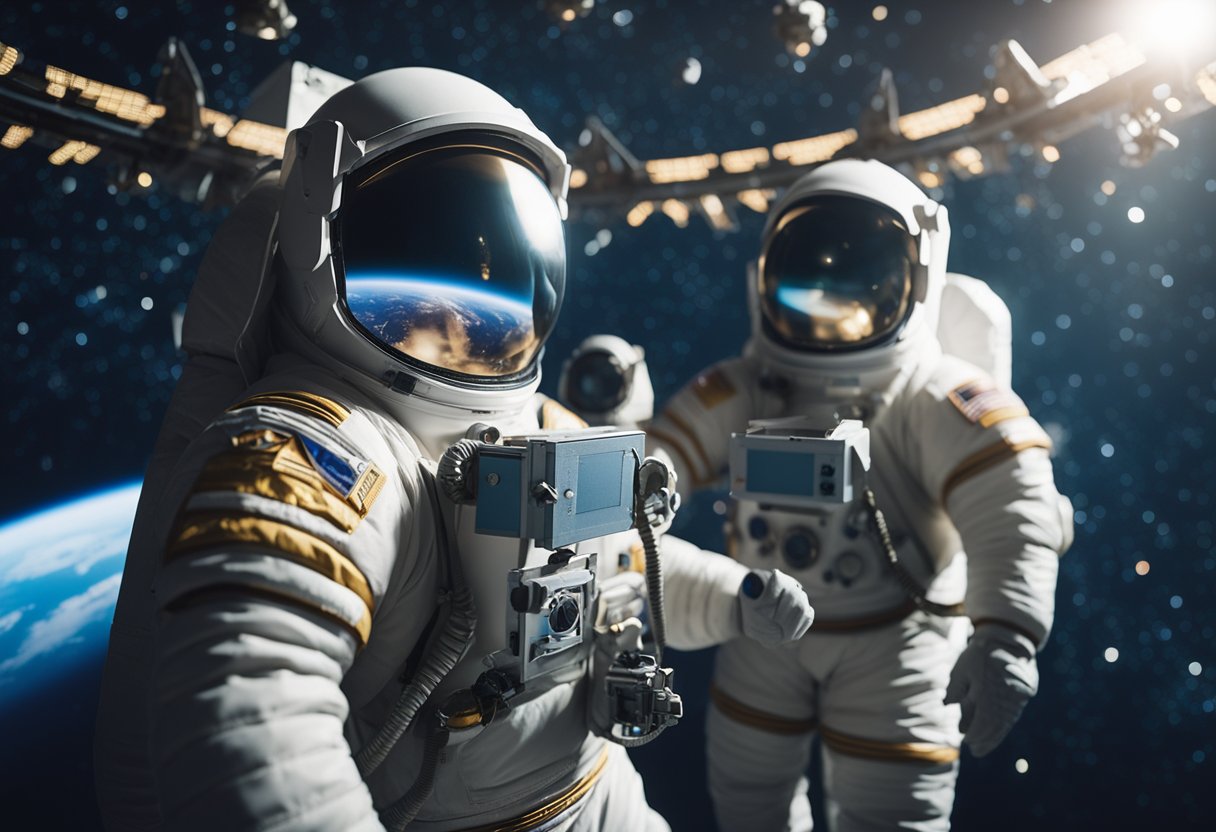
In space tourism, prioritising the safety of passengers is paramount. We’re here to discuss the essential health considerations and emergency protocols that pave the way for a secure spacewalk experience.
Space tourism introduces unique health concerns due to the absence of gravity and presence of cosmic radiation. We are well-versed with the need for tourists to undergo rigorous health screenings before embarking on their journey. Radiation exposure is a significant risk because it can increase the likelihood of cancer; therefore, adhering to strict safety guidelines is a must to minimise such risks.
More information on the potential long-term effects of radiation exposure in space tourism can be found on Ts 2.
Tourists are required to complete comprehensive training to prepare for the physiological demands of space, including cardiovascular fitness and acclimatisation to weightlessness. This aims to mitigate the incidence of space motion sickness and other health-related risks that could jeopardise the mission or individual well-being.
Regarding emergency protocols, exhaustive preparation is undertaken to confront any possible contingency in space. We devise clear action plans for spacecraft malfunctions, medical emergencies, or unexpected incidents during a spacewalk.
Extraordinary measures are in place, ensuring the craft is equipped with life-support systems capable of handling unanticipated circumstances. A solid example of this preparedness is seen with SpaceX Tourists planning to attempt a spacewalk, where safety has been meticulously considered in their operations.
All our endeavours in space adhere to rigorous safety regulations, as space’s unforgiving environment necessitates an unwavering commitment to the protection of all spacefarers.
Before embarking on a spacewalk, we must undergo extensive specialised training to ensure a safe and successful experience. Spacewalks require not only physical readiness but also mental resilience.
Physical Readiness:
To ensure we’re physically up to the task, we engage in rigorous exercise regimens. These regimens often resemble those followed by professional athletes. It’s necessary to maintain peak physical condition to handle the stressors of space.
Mental Preparedness:
Mental fitness is as crucial as physical strength. We must be able to focus intently, as operating in the vacuum of space leaves no room for error.
Simulations:
Training often involves simulations of the microgravity environment found in space. Parabolic flights, sometimes dubbed “vomit comets,” offer short-lived weightlessness, whilst Neutral Buoyancy Lab simulations involve vast swimming pools that mimic the sensation of zero gravity. Here, we practice manoeuvres in scale replicas of space modules, learning to move and work in our pressurised spacesuits.
Understanding Our Suits:
Familiarity with our spacesuits is vital. We must know every function and feature, as our lives literally depend on the integrity and operability of these suits during a spacewalk.
Emergency Procedures:
We study and rehearse emergency procedures to prepare for potential risks. Knowing how to respond in a crisis is essential for our safety and the success of the mission.
By mastering these areas, we can look forward to stepping outside the craft and into the void, fully prepared for the wonders and challenges of a spacewalk. This preparation not only equips us for the task at hand but also enriches the spacewalk experience , offering deeper insights and a greater appreciation for the complexities of human spaceflight.
While travelling to the International Space Station (ISS), we are privileged to experience life in Earth orbit. Upon arrival, we’re immersed in a world where microgravity rules, challenging our Earth-bound conceptions of up and down.
Life in Microgravity:
Viewing Earth:
Daily Routine:
We understand that safety is paramount whilst onboard. Safety briefings and meticulous planning ensure a memorable and secure experience for all. For those seeking further information on the tantalising possibilities of space tourism, SpaceVoyageVentures.com stands as a beacon for what’s on the horizon and the incredible opportunities nearly at hand.
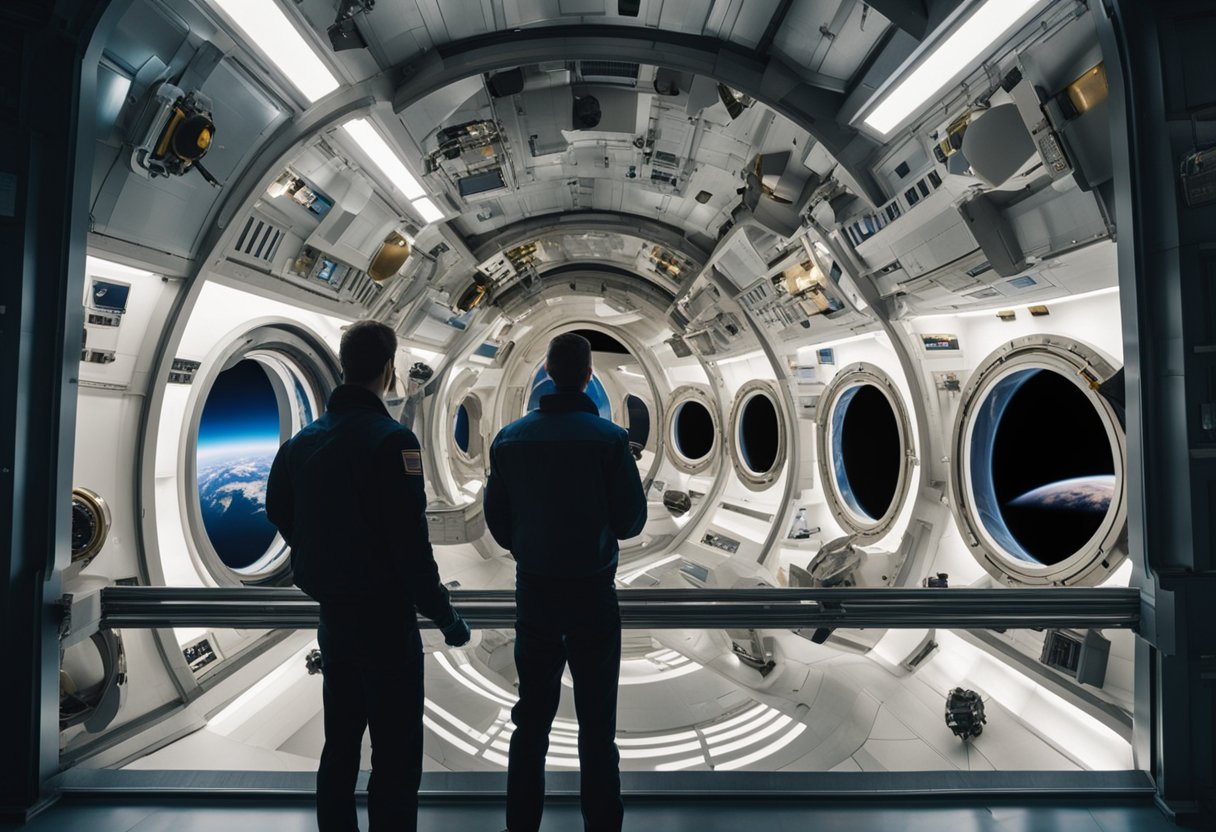
In recent years, we’ve observed a significant transition with several commercial entities propelling space tourism from a science fiction dream to a palpable reality. Each company has carved out its niche, offering distinct experiences and visions for space travel.
SpaceX, founded by Elon Musk, is focused on revolutionising space technology with the goal of enabling people to live on other planets. They’ve made headlines with their Crew Dragon spacecraft, which is designed not only for commercial travel but also to ferry astronauts to and from the International Space Station (ISS).
Another key player is Virgin Galactic, part of Richard Branson’s Virgin Group, which has taken a pioneering role in suborbital space flights. They’ve designed SpaceShipTwo, a craft that allows tourists to experience weightlessness and views of Earth’s curvature.
RSC Energia, a part of the S.P. Korolev Rocket and Space Corporation conglomerate, continues to play an instrumental role in Russia’s space endeavours. Their Soyuz spacecraft have become synonymous with reliability in the realm of manned spaceflight.
| Entity | Focus Area |
|---|---|
| SpaceX | Interplanetary Travel |
| Virgin Galactic | Suborbital Flights |
| RSC Energia | Manned Spaceflight |
Equally important, under the umbrella of RSC Energia, Russian cosmonauts continue to contribute to space tourism, facilitating visits to the ISS.
We’ve also seen the inception of early space tourism pioneers such as SpaceVoyageVentures.com, which documents the evolution of space tours, from those available today to those glimpsed on the horizon.
As we stand at the dawn of commercial spaceflight, each entity contributes unique expertise and vision, shaping a future where the cosmos becomes a new frontier for adventurous tourists.
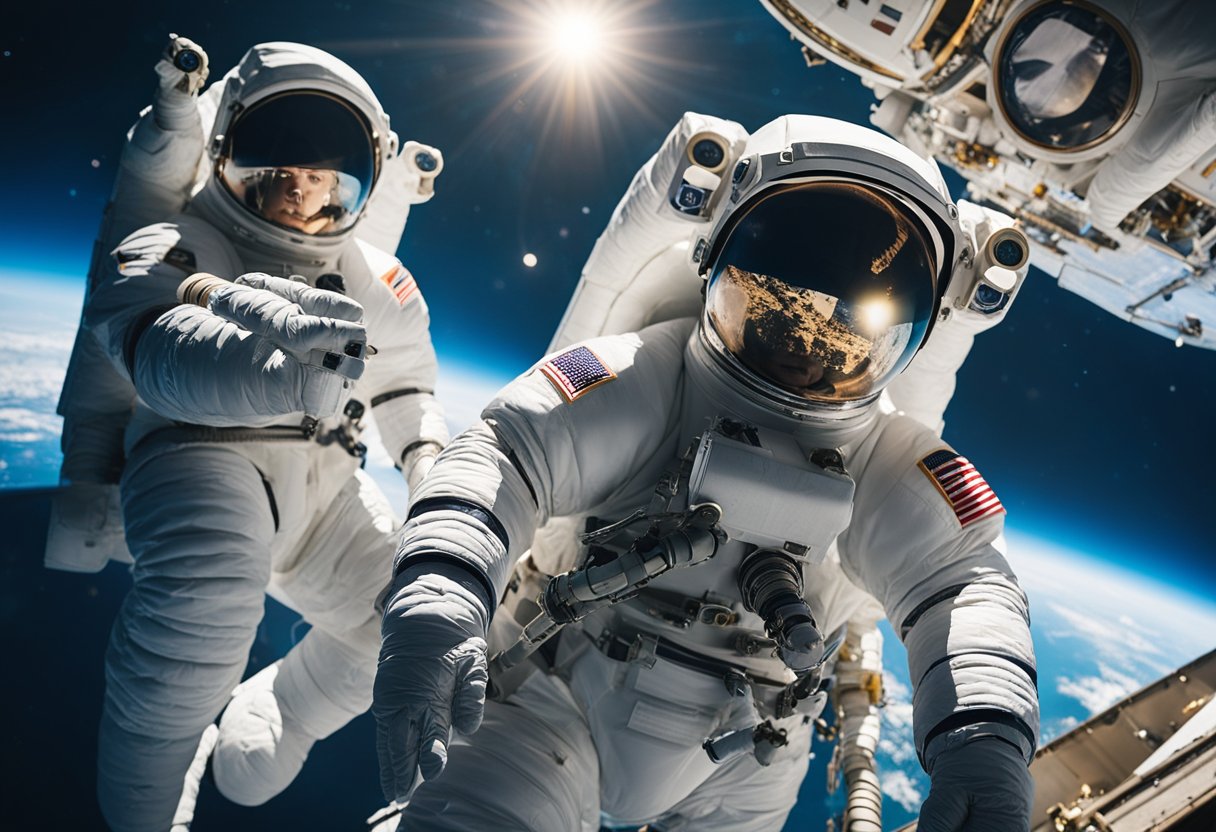
In the burgeoning era of private spaceflight, we are witnessing an increasing interest in the ultimate adventure—spacewalks for tourists. Historically exclusive to trained astronauts, the possibility of open space excursions is becoming a tangible reality.
Moon Ventures:
We expect lunar tourism to significantly shape the future of spacewalks. As agencies prioritise returning to the Moon, the potential expands for tourists to embark on lunar spacewalks. This leap would represent not only a milestone for human spaceflight but also a defining moment for every potential spaceflight participant.
Private Spaceflight Participation:
Private companies are enhancing their offerings to include spacewalks, making the dream of walking in space a possibility for non-professional astronauts. The collaboration between such companies and traditional space agencies indicates a shift towards a more inclusive approach to human spaceflight experiences.
Open Space Walks:
For those daring to walk in open space, we foresee a structured progression of spacewalk experiences, extending from short excursions near spacecraft to more extensive activities. These developments depend on ensuring the absolute safety and accessibility of spacewalks for non-specialists, a challenge we are committed to overcoming.
Future Gear and Training:
In conclusion, the ambition for tourist spacewalks is not just a flight of fancy but a target within reach. Our platform, SpaceVoyageVentures.com, serves as a beacon for these pioneering opportunities, outlining the spectrum of experiences available or near at hand. The stars are closer now than ever before, and we stand at the threshold of a new epoch of exploration.
In the epoch of space tourism, our mission extends beyond mere travel. We focus on kindling a global conversation about the cosmos, involving enthusiasts and novices alike through various engagement strategies.
We utilise platforms such as Twitter to share real-time updates and engage in discussions with our followers. By conducting live-tweet sessions during rocket launches, we’re able to share the excitement with a global audience. Through space forums and hashtags, we foster a community where experiences are exchanged, and knowledge is expanded.
Our website, SpaceVoyageVentures.com, boasts detailed sections on skywatching and launch events. We encourage our community to participate in local skywatching events, which are curated and shared on our events calendar. Additionally, for those who cannot attend in person, we provide live streams and collaborative observation sessions to ensure no one misses out on the awe-inspiring splendour of a launch.
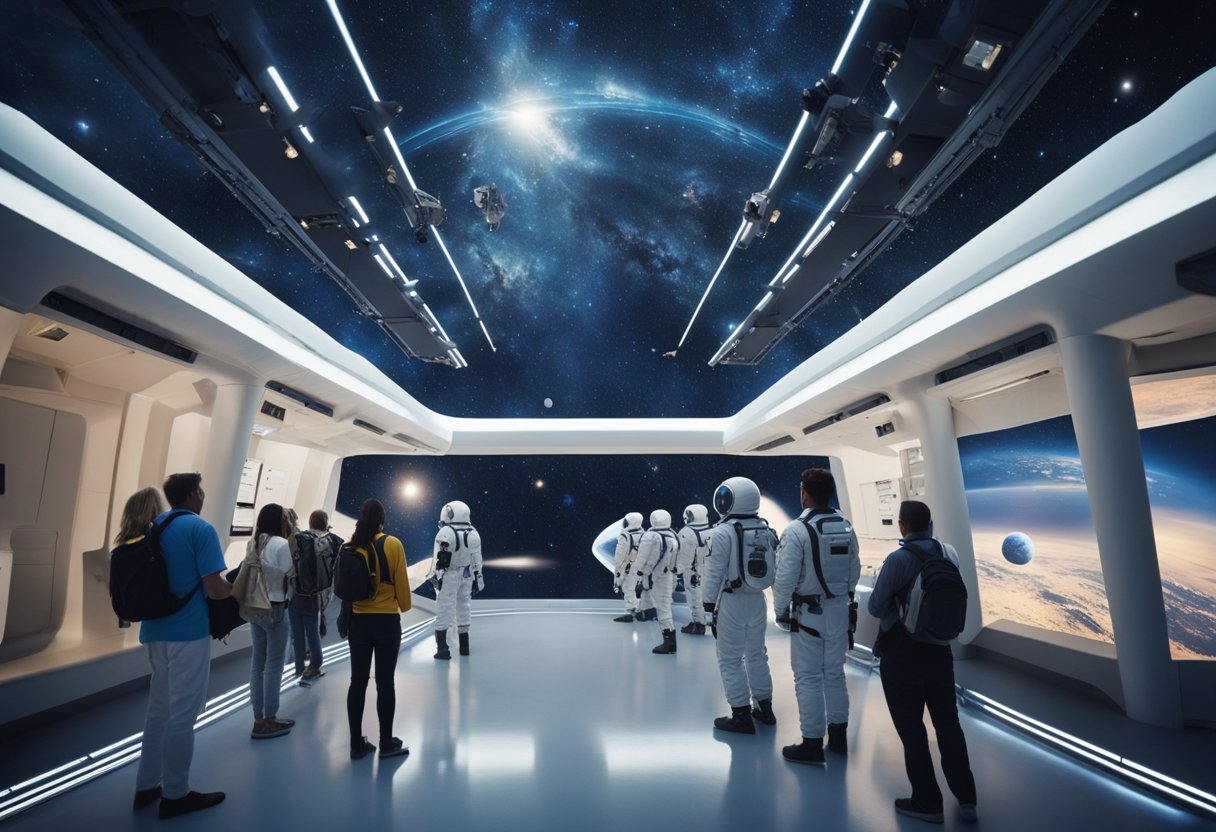
In the rapidly evolving domain of space tourism, various determined personalities have achieved significant milestones. As we observe the industry’s expansion, it’s fascinating to note the contributions of figures such as Elon Musk, Sir Richard Branson, and Jared Isaacman.
Elon Musk, the CEO of SpaceX, has revolutionised space technology with the aim of enabling people to live on other planets. His ambition has outlined a path for future tourist trips into deep space with the fervent development of the Starship spacecraft.
Sir Richard Branson, the vivacious chairman of Virgin Galactic, took a monumental step by boarding his company’s SpaceShipTwo on a suborbital flight, heralding a new era for commercial spaceflights.
In an unprecedented move, Jared Isaacman, a visionary entrepreneur, led the Inspiration4 all-civilian mission aboard a SpaceX Crew Dragon, underscoring the potential for non-astronauts to reach orbit.
| Year | Milestone |
|---|---|
| 2021 | Inspiration4 mission led by Jared Isaacman |
| 2021 | Virgin Galactic’s first fully crewed flight with Richard Branson |
Former NASA astronaut Michael Lopez-Alegria will be known for taking the first space tourist on a spacewalk outside the ISS in 2023, marking a leap in space tourism activities.
We acknowledge that these pioneers have not just traversed the frontiers of space themselves but opened the gateway for many more to experience the awe of space tourism. Through platforms such as SpaceVoyageVentures.com, we gain insight into the potential voyages that await us, from those on the cusp of availability to conceptual trips of the future.
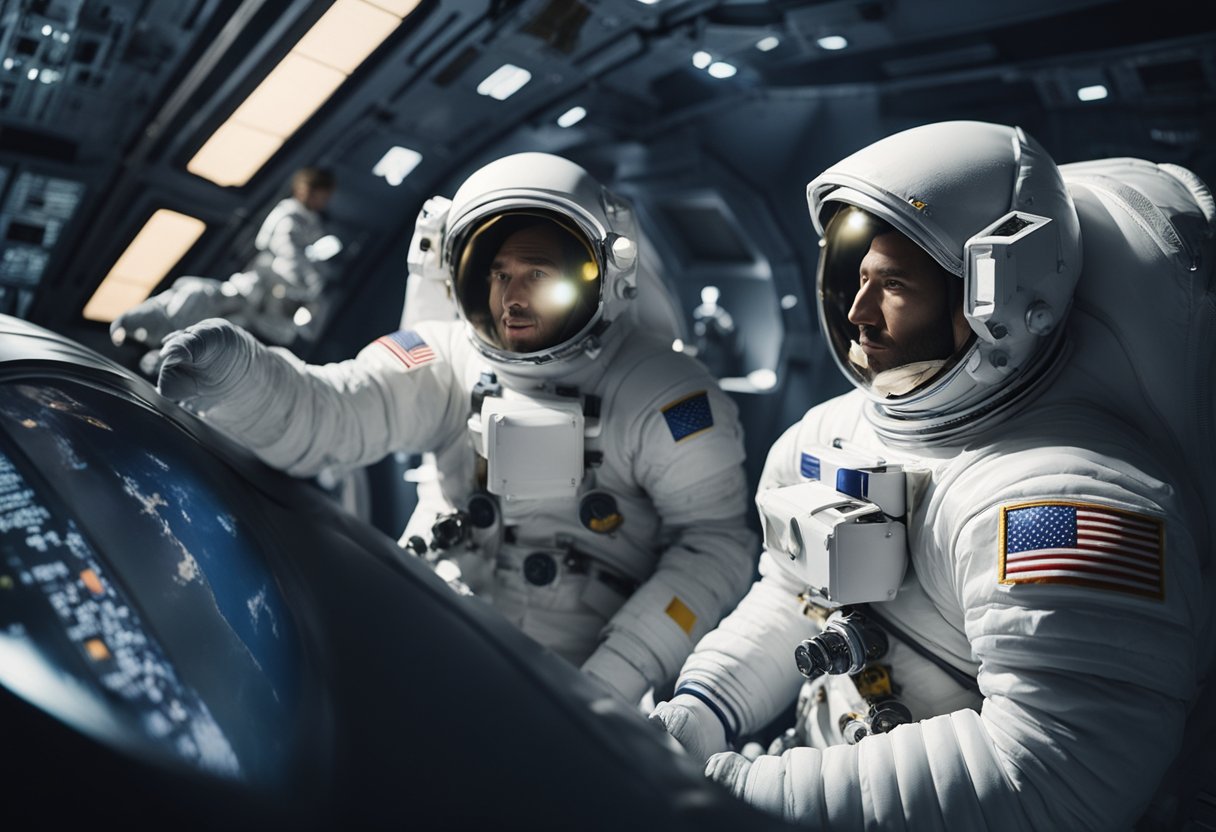
In this section, we address some common queries that prospective space tourists have regarding spacewalk experiences.
Tourists typically undergo rigorous training programmes that include orientations on spacecraft systems, safety procedures, and the physical demands of spacewalks. These preparations are conducted by experienced astronauts and space professionals.
A spacewalk tour package often encompasses a simulated spacewalk experience, training in virtual reality environments, and sessions on manoeuvring in microgravity conditions. Virtual reality simulators offer an immersive prelude to actual spacewalks.
The cost for participating in a tourist spacewalk can vary greatly, often reaching several tens of millions of pounds, as it includes extensive training, use of specialised equipment, and access to space facilities.
While the Kennedy Space Center provides a variety of astronaut training experiences, actual spacewalks for tourists are not conducted at this or similar terrestrial facilities. Tourists can, however, participate in several simulation experiences.
Strict safety measures are enforced, including the use of tethering systems, professional-grade spacesuits, and comprehensive pre-flight health checks, ensuring participants’ utmost safety during the spacewalk experience.
Reviewers often highlight the authenticity of astronaut training experiences, which include simulated zero-gravity environments and VR sessions, feeling it closely mimics actual astronaut training routines and spacewalks.